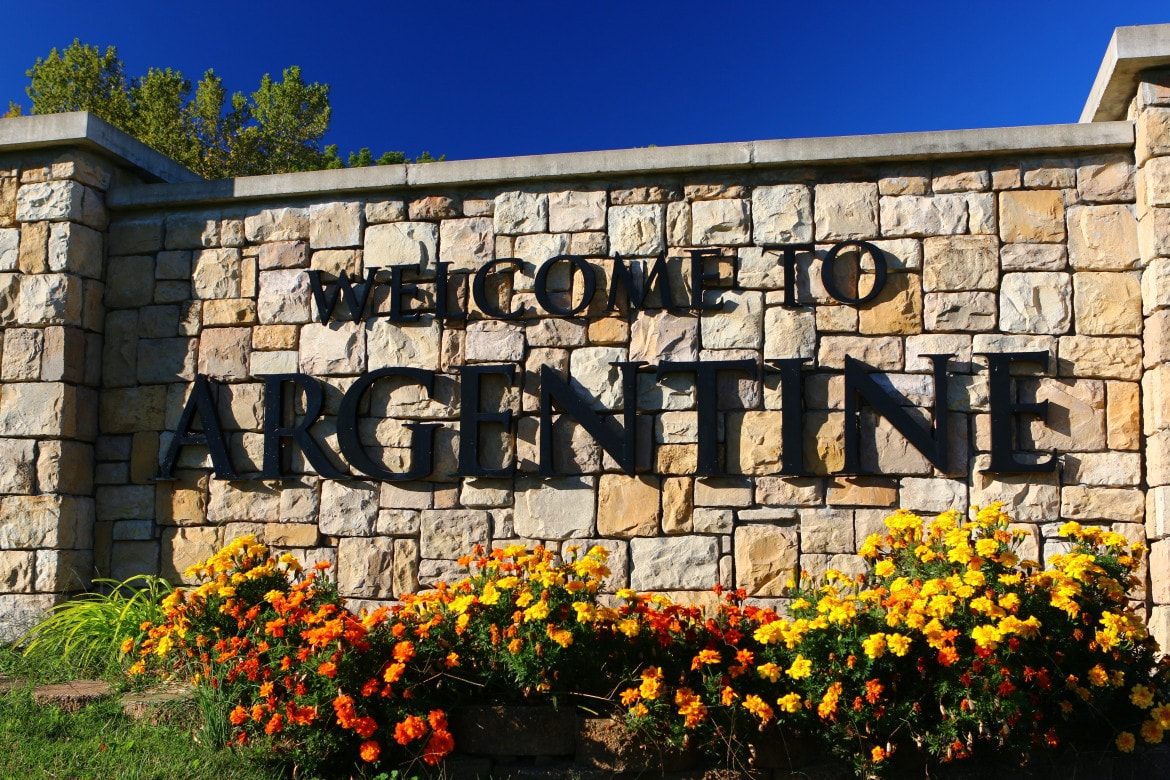Does a New Apartment Project Mean New Life in Argentine?
 “It’s a huge deal for people in Argentine,” says 3rd District Wyandotte County Commissioner Ann Brandau-Murguia of a building renovation project that recently opened in the Argentine neighborhood of Kansas City, Kansas. (Photo: Matt McClelland | Flatland)
“It’s a huge deal for people in Argentine,” says 3rd District Wyandotte County Commissioner Ann Brandau-Murguia of a building renovation project that recently opened in the Argentine neighborhood of Kansas City, Kansas. (Photo: Matt McClelland | Flatland)
Published December 13th, 2015 at 7:55 AM
Two historic buildings in the Argentine neighborhood of Kansas City, Kansas, are getting new life – and community members there are seeing the revitalization project as a symbol of a community comeback.
“It’s a really big deal,” Graciela Duarte said, an Argentine resident who was serving as a tour guide recently for the Simmons Villas Senior Apartments. The two historic buildings, located at 1333 South 27th St. and 1404 South 37th St,. have been renovated into residences for the elderly.
Both Duarte and fellow Argentine resident and tour guide Elva Hernandez say the renovation is a big deal for their community.
“This was an area going downhill, that was dead,” Hernandez said. “That’s why we’ve lost a lot of community people. Now that it’s rising, we’re seeing a lot of people coming back. We have a new Walmart here and the bus right there. Everything is in Argentine now. Before we had to go outside Argentine.”
The Argentine Neighborhood Development Association (ANDA) conducted a ribbon-cutting ceremony in mid-November, along with the building tours, for the Simmons Villas apartments.
Building No. 27, at 1333 South 27th St., was built in 1937 as a YMCA to house workers from the nearby Santa Fe Railroad depot. It also served as the offices for El Centro, which provides services for Spanish speaking people in Kansas City.
Building No. 37 was originally a doctor’s office built in 1925. Converted to a funeral home in 1935, the building was operated by the Simmons family until 2007.
ANDA board president Henry Sandate agrees that the renovation and repurposing of these historic buildings is a huge accomplishment.
“This is a community,” Sandate said, “like all other communities in our country that were thriving 80, 90, 100 years ago.”
Citing the urban flight which affected Argentine in the 1960s, Sandate described the subsequent absence of retail and other services within the community.
“It’s affordable living. It allows a place to be here and be close to friends and family. That’s monumental.” — ANDA board president Henry Sandate
But many citizens remained in Argentine, sustaining a Hispanic and Mexican-American influence in the area. This influence was furthered by the presence of services for Spanish-speaking individuals.
“Now there are people that moved away that want to come back,” Sandate said. “Retired individuals that want to be in this community by choice as well as a younger population that just want to be close to jobs in this city or look for older structures.
“What’s good about this structure is that it lends itself to that. It’s affordable living. It allows [seniors and elderly persons] a place to be here and be close to friends and family. That’s monumental.”
Ann Brandau-Murguia, 3rd District Wyandotte County commissioner and ANDA’s executive director, spoke at the ribbon-cutting ceremony. Brandau-Murguia said she believed that the remodeling of the historic properties already has impacted Argentine. She explained that during the renovation, many people witnessed the progress that was being made on the exteriors of the buildings and began making improvements to their own homes. Seeing them become something more than an abandoned property caused people to take more pride in their community.
“It’s a huge deal for people in Argentine. These are two buildings that have a lot of history here that have been around since the early 1900s,” Brandau-Murguia said. “They’ve been a part of people’s lives in a lot of ways, and I think people are thrilled to see them be repurposed and stay in the community and not just be bulldozed down.”
This story is part of a reporting project from KCK/Wyandotte County, produced by UMKC journalism students as part of an education collaboration between KCPT’s Hale Center for Journalism, KCUR, and UMKC.





